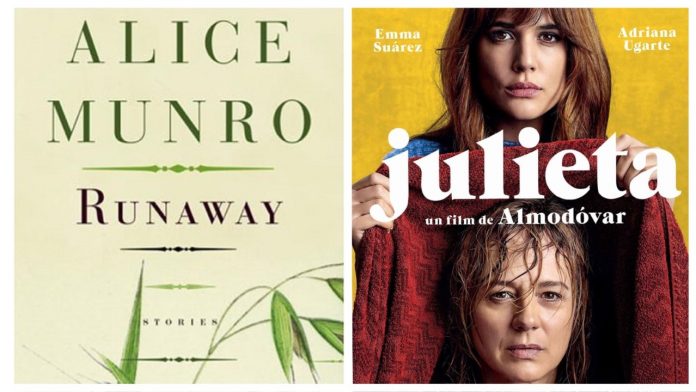Julieta – A Perfect Adaptation?
Julieta is a Spanish-language 2016 film directed by Pedro Almodóvar, and it is little known that it is actually based on three short stories, ‘Chance’, ’Soon’ and ‘Silence’ by Alice Munro within her Runaway collection initially published in 2004.
The film is a melodrama which traces the life of the eponymous protagonist through the love and loss of her partner Xoán and daughter Antía, the latter of which permanently leaves home after a spiritual awakening. From page to screen Antía becomes Penelope and Xoán becomes Eric. This film perfectly encapsulates the power of adaptation and how completely different pieces of art can complement one another.
The director uses aspects of the stories to facilitate an expansion of his cinematic world that has garnered him so much success. Maternity is a key theme of his filmmaking always presented in specific ways to build a representation recognisable to his work. In his films Almodóvar’s families centre around maternal figures and lack of paternal voice. Munro’s stories were the perfect source material as the father, Xoán, is absent.
The director’s cinematic representation of grief is vital as this is a key theme of the stories. The most interesting interpretation of the protagonist’s grief is the change of actress. Adriana Ugarte plays the younger Julieta whereas later in the film she is played by Emma Suárez. The pivotal change of actress occurs when Julieta is grieving the loss of Xoán and so this artistic decision encapsulates her dark emotions.
The key difference between Almodóvar and Munro’s interpretation is the two endings. The stories’ end is unsure and pessimistic, as Juliet has still heard nothing from Penelope. However in the film she receives a letter from Antía! This much more hopeful and poignant ending is built visually through a wide shot and freeness of the mountains. This change of the endings is necessary as it enables Almodóvar’s cyclical theme of motherhood to come full circle. By leaving the ending of the film on a more hopeful note Almodóvar allows for an imaginary off-screen possibility of a connected maternal relationship to unfold in the minds of the audience. The ending ultimately presents motherhood positively as she rushes to her daughter despite the pain that she caused her and this is a key Almodóvarian theme of resolution between mother and daughter not found in Munro’s writing.
The director makes changes to Munro’s writing to expand upon his existing representation of motherhood yet manages to maintain the essence of Munro’s characters. The short stories and film show the interesting process of adaptation that tracks the movement onto screen that allow certain aspects to be explored in ways not fulfilled in the original stories. Ultimately, the film encapsulates the eclectic cinematic rendering of literature and reflects how changes in adaptation can be beneficial.
Words by Evie Miskelly
Want more Books content from The Indiependent? Click here!
Support The Indiependent
We’re trying to raise £200 a month to help cover our operational costs. This includes our ‘Writer of the Month’ awards, where we recognise the amazing work produced by our contributor team. If you’ve enjoyed reading our site, we’d really appreciate it if you could donate to The Indiependent. Whether you can give £1 or £10, you’d be making a huge difference to our small team.
